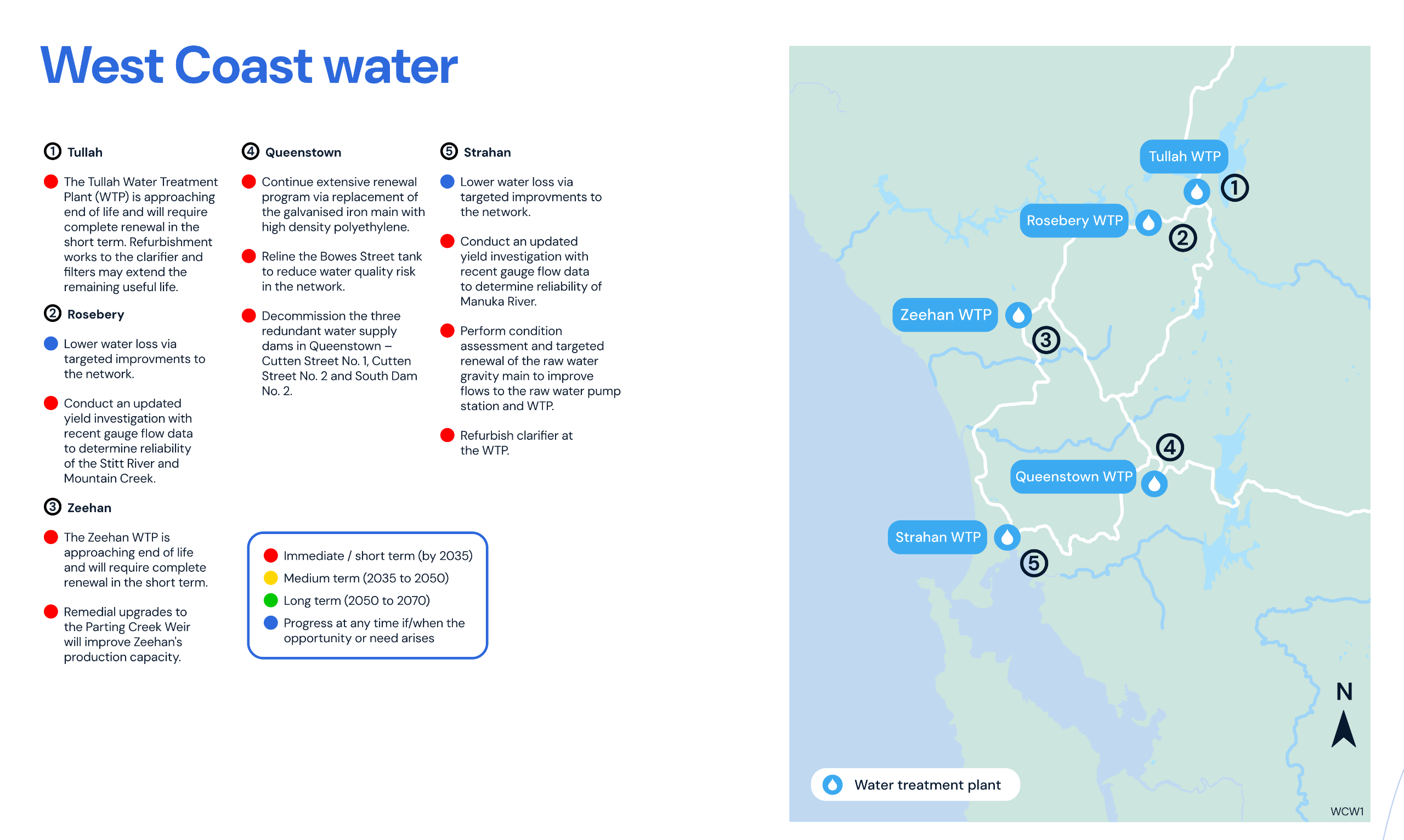Current services
The region has five water and seven sewerage systems to support the region’s residents, businesses and farms.
A feature of the West Coast is its high rainfall, with an average of 70% wet days each year. This affects our sewerage systems through high levels of stormwater getting into our pipes, pump stations and treatment plants. In Queenstown, the sewerage and stormwater systems are combined so our treatment plant has to manage unpredictable inflows from an average of 2.4m of rainfall each year.









